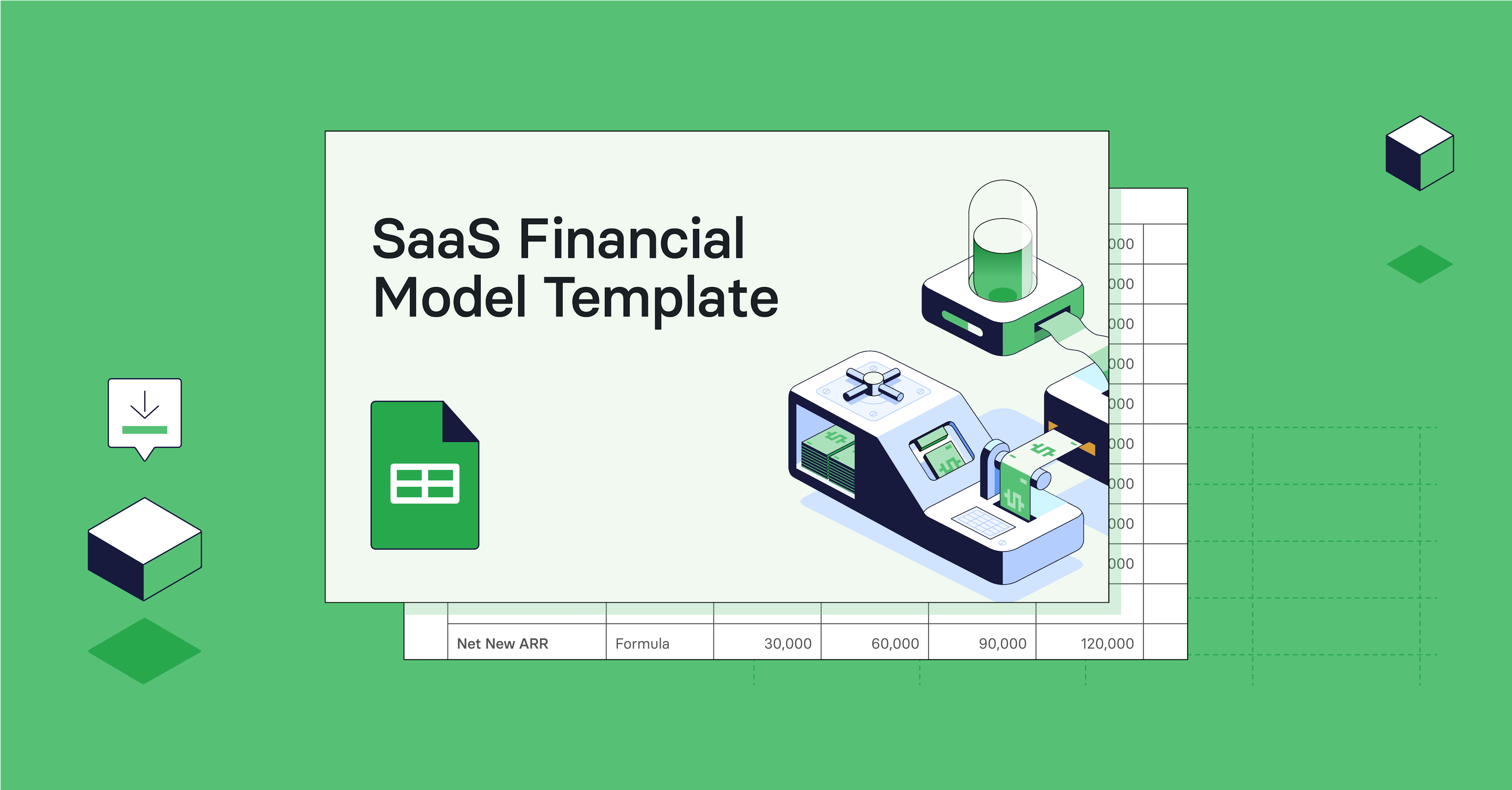A feature originally pioneered in the 1980s could be just the innovation SaaS businesses need to achieve their financial goals faster.
Sweep accounts can help you earn more interest on your excess cash — which is obviously financially beneficial for startups. But these accounts aren’t for every person or small business. So, how can you maximize the benefits of sweep accounts?
Below, you’ll find details on how sweep accounts work, their many advantages, their drawbacks, and how to incorporate them into your SaaS business’ financial strategy.
Table of Contents
What is a Sweep Account?
Sweep accounts are a type of bank or brokerage account where any funds over a predetermined threshold are automatically transferred to a different location, such as a higher-interest investment account or money market fund.
These accounts leverage the power of automation to “sweep” your cash balance at the close of each business day. And you typically set your own threshold, so it’s easier to maximize every extra dollar.
Types of Sweep Accounts
While the basic function — the “sweeping” feature — is the same across the board, there are multiple kinds of sweep accounts businesses can open, depending on their unique needs:
- Business sweep account. Your excess funds will automatically move directly from your business accounts.
- Payback sweep account. Rather than transferring excess funds to an investment account, they go toward paying down a business loan or the balance on a line of credit.
- Payroll sweep account. Leave the manual pain of running payroll behind with this type of account. Automatically move excess cash from your operating funds into payroll to ensure you don’t run into any time (or cash) crunches.
- Insured cash sweep (ICS) account. While FDIC insurance protects balances up to $250,000, ICS accounts can “sweep” additional funds into external accounts via an interconnected network of banks. That way, you can enjoy deposit insurance protection beyond the first $250,000 in a single account.
The Financial Benefits of Using a Sweep Account for Your SaaS Business
Sweep accounts are advantageous for businesses across various industries, including SaaS companies. Businesses can specifically benefit from sweep accounts’ simplified cash management, along with the increased interest rates on idle funds.
Maximizing Interest Income
It takes money to make money — which is why every dollar should be maximized in a SaaS business. Sweep accounts can help SaaS companies multiply their funds faster by earning better interest rates on idle cash.
It’s easy to set up your business’ sweep account to transfer excess funds into an investment account to get the most bang for your extra bucks.
For example, take the excess funds earning nothing (or next to nothing) in your regular business account and, instead, set up a sweep to a money market account. These can offer competitive APY interest rates up to 4.75%.
Enhancing Cash Flow Management
Sweep accounts make it simple to automate some of your SaaS business’ cash flow tasks. It’s not unusual for SaaS businesses to run into cash flow bottlenecks. But whether it’s accidental overspending, underestimating operational costs, or fluctuating cash flow, sweep accounts can help.
For example, you can use your bank sweep to park extra funds in a savings account that serves as a stop-gap or emergency fund. So, if your cash flow dries to a trickle one month, you’ll have those funds waiting for you.
What’s even better is that you can set it and forget it — once you set up your sweep account, it’ll automatically transfer funds daily. No additional oversight required.
How To Set Up a Sweep Account Step-by-Step
If you’re ready to get a sweep account for your SaaS business, you can follow the steps below to get started.
1. Do Your Homework
SaaS businesses will need to do some research before they even open a sweep account. First, check whether your current bank or brokerage offers a sweep account. Next, narrow down the type of sweep account you want to open to meet your needs.
2. Choose the Right Bank or Brokerage
If your bank or brokerage doesn’t offer what you need, you’ll have to go elsewhere.
Again, do a little research on financial institutions or brokerage accounts with a sweep feature. For a little direction, check out NerdWallet’s list of top brokerages for high-interest-rate cash sweeps and their list of the best banks for startups.
3. Review the Terms and Conditions
Before actually opening your account, take a hard look at the bank or brokerage’s fine print for your chosen sweep account. Reading through these details can make or break your sweep account’s success.
Here, you’ll find crucial details like limits on the number of monthly transfers, fee structures, and more. If you’re planning to invest your extra cash in money market funds, make sure you check the terms and conditions for the expense ratio of your account.
4. Open Your Sweep Account
It’s time to pull the trigger! If your chosen bank or brokerage passes your vetting, you can open your account online. This account will serve as your origin account (where your funds will transfer from).
5. Set Your Cash Limit
This is typically the amount you need for day-to-day operations of your business. Anything beyond this threshold is what will be transferred via daily cash sweeps.
For example, if you set your threshold at $50,000, any cash beyond that $50,000 mark will be transferred. To determine your daily cash limit, you’ll want to consider your company’s gross burn rate.
6. Choose Where You Want Your Cash to Go
Set up where your extra cash will go. This is your deposit account, and will depend on the type of sweep account you selected.
If you want to send sweep funds to an interest-earning account, you may choose to set up transfers to a money market mutual funds account or high-yield savings account. If you want to repay debts, you can send those funds to your business loan, credit card, or line of credit.
Now, you’re ready to start your daily sweeps!
Limitations and Risks of Sweep Accounts
Although sweep accounts offer some stellar upsides, they also have a couple of potential drawbacks. It’s important to have all the information to assess whether this type of account will meet the needs of your SaaS business.
Potential Fees and Restrictions
Depending on the sweep account and bank or brokerage you choose, you could encounter some unexpected fees and limitations that negate some of the benefits.
Keep an eye out for:
- Deposit limits. Not all brokerages offer unlimited free deposits. Some will set a threshold you can transfer with your sweep account in a month.
- Few amenities. If you need a sweep account that provides the same features as a checking account, you might be sorely disappointed. Many accounts don’t offer access to ATMs, checks, or debit cards.
- Varying fee structures. Some brokerages and financial institutions will charge a flat rate for your sweep account, while others will charge a percentage of your yield. Make sure the fees don’t negate the extra interest your cash has earned!
- Withdrawal penalties. This is another sneaky fee that can cut into your earned interest. Some sweep accounts charge a penalty for premature withdrawals, so check the account’s terms and conditions to see if that’s the case.
Interest Rate Fluctuations and Impact
One of the primary benefits of sweep accounts is that you can transfer your idle funds to either invest or earn a far better interest rate.
According to NerdWallet, some brokerages have created sweep accounts connected to money market accounts and CDs that offer interest rates of 1.5% to 5.1% per year. However, these interest rates aren’t guaranteed and can change anytime without notice. That deeply impacts how much (and how fast) your excess funds can multiply.
How Sweep Accounts Fit into Your Overall SaaS Financial Strategy
Sweep accounts are powerful, flexible tools that are simple to weave into your SaaS business’ overarching financial strategy. Here’s how:
Integrating with Your Business’s Financial Plan
It’s easy to add sweep accounts into the mix to help your SaaS business achieve its goals. Depending on your holistic financial plan, you can parlay a sweep account in a number of ways, including:
- Cash management. Daily cash transfers make sweep accounts an ideal cash management vehicle. Idle funds are efficiently invested, transferred to a higher-yield account, or pay down debts. They’re especially helpful for managing cash when a business’ cash flow fluctuates since additional funds during high-cash-flow months can stay liquid for months with lower cash flow.
- Liquidity management. By maximizing returns on your SaaS business’ extra funds while keeping them liquid, you’re putting that extra cash to work while making sure it’s accessible should you need it.
- Debt payback strategy. If you’re prioritizing paying down a business loan or line of credit, you can automatically use your extra cash to eliminate those debts even faster.
- Maximize returns on extra cash. Idle cash just sitting in your business checking account isn’t doing you any good. Sweep accounts ensure any extra funds are earning a solid interest rate and multiplying your money faster to reinvest in your business.
- Reduce manual errors. Some SaaS businesses have too much on their plates and not enough staff to knock out that never-ending to-do list. However, the automation of sweep accounts earns higher returns, simplifies cash management, and/or pays off debts faster without any extra effort or oversight on your part.
Complementing Other Financial Tools and Services
Sweep accounts are just one tool to help you execute your financial strategy. Fortunately, sweep accounts have the flexibility and customization options to effectively work hand-in-hand with your existing cash management workflows to get you to your goals faster.
For example, let’s say you’re using transfers from your sweep account to pay down a line of credit. And you’re using a financial insights platform like Mosaic to create a financial model. You can tinker with different scenarios and lean on this model to demonstrate how quickly sweep account transfers will expedite paying down your SaaS business’ debt.
Get the SaaS Financial Model Template

Key Takeaways on Sweep Accounts for SaaS Businesses
Sweep accounts are by no means a silver bullet, but they can be one effective tool in your SaaS business’ financial arsenal. Lean on sweep accounts to simplify and automate some of your cash management while also earning extra interest on funds that’d normally be sitting idle.
The sweep feature can complement existing financial tools and strategies you have in place. So, take the time to consider whether a sweep account would be right for your SaaS business.
Sweet Account FAQs
Are sweep accounts beneficial for all types of businesses?
Sweep accounts can be advantageous for companies across many industries since these accounts use the power of automation to make your money multiply faster. Every business can benefit from earning more interest on their extra cash. But businesses should pay close attention to fee structures and deposit limits when assessing different sweep accounts.
How do sweep accounts differ from regular savings accounts?
What are the risks associated with using a sweep account?
Own the of your business.

